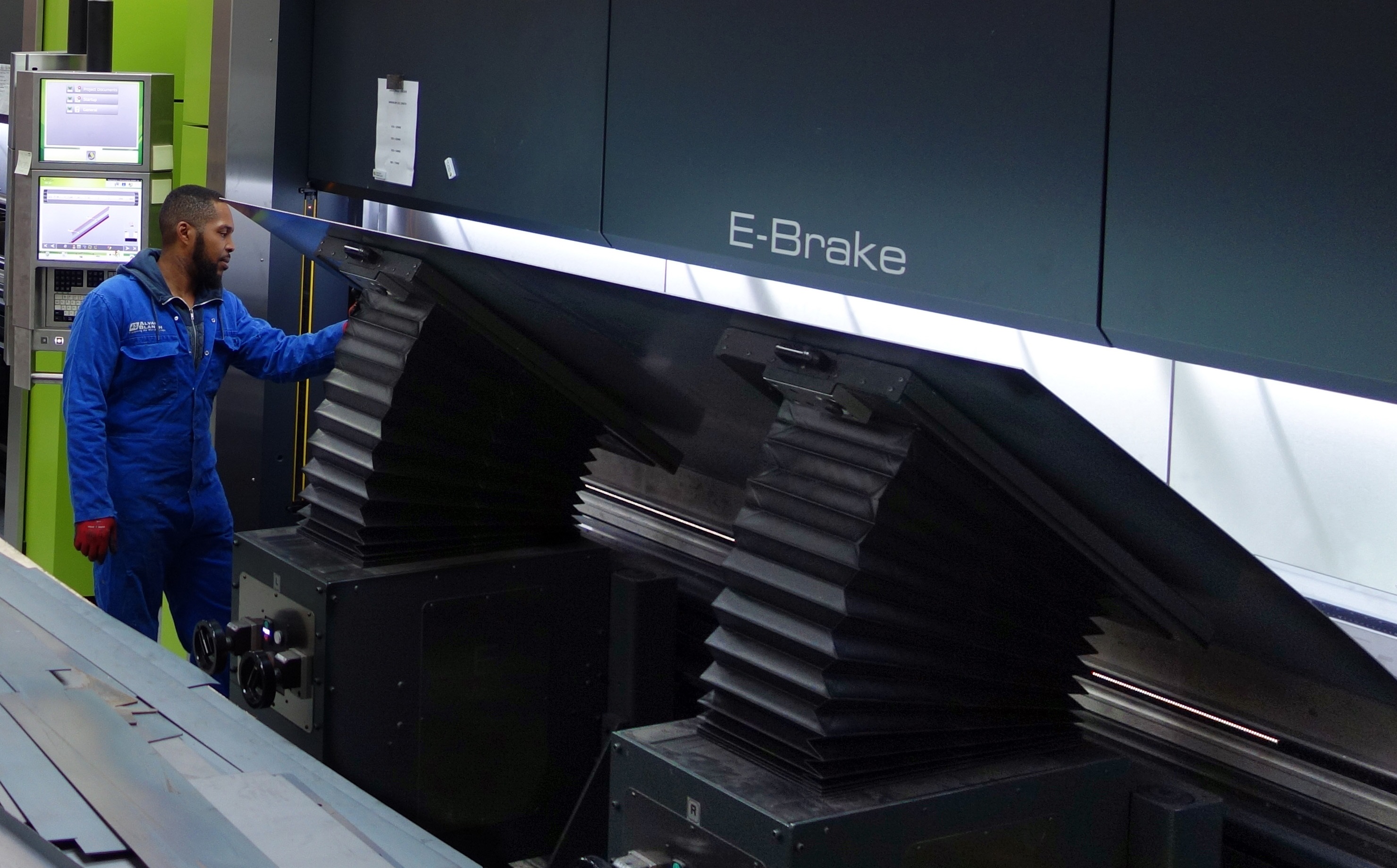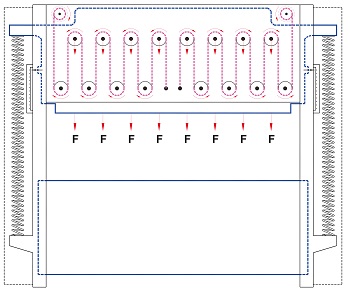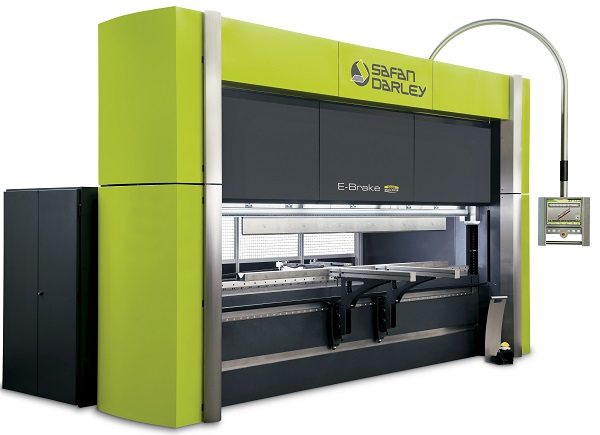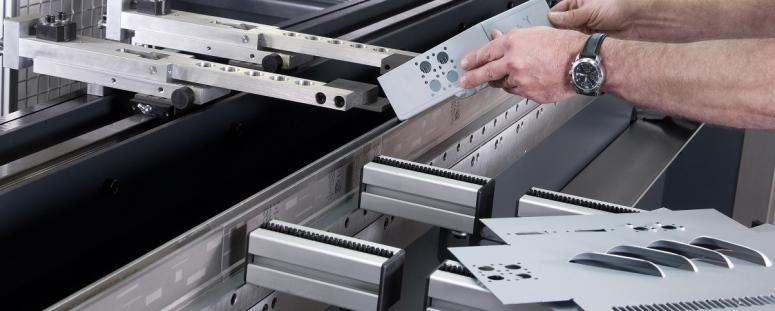Folding is an essential operation that conditions the workflow in a sheet metal workshop. The challenges are numerous: productivity, precision of folded parts, safety of the operator, etc.
Almost all sheet metal plants use press bending machines at this production post. Two main technologies are proposed by the manufacturers: machines with hydraulic drive and those with electric drive by servomotors.
 The main advantage of hydraulic press brakes is to offer very large folding capacities. On the other hand, despite the higher purchase cost of electric press brakes, the use of servomotors instead of hydraulic cylinders brings productivity, energy, flexibility and maintenance gains. And the capacities of electric press brakes can be of up to 4 meters of folding and a force of 300 tons.
The main advantage of hydraulic press brakes is to offer very large folding capacities. On the other hand, despite the higher purchase cost of electric press brakes, the use of servomotors instead of hydraulic cylinders brings productivity, energy, flexibility and maintenance gains. And the capacities of electric press brakes can be of up to 4 meters of folding and a force of 300 tons.
Mauricio Gutierrez Matta, Export Manager, SafanDarley, builder-developer of hydraulic and electric press brakes, agreed to enlighten us.
There are 5 axes of differentiation between electric press brakes and hydraulic press brakes:Operating time: only 40%!
On average, 60% of the operating time of a hydraulic press brake is used for adjustment and maintenance operations: programming, changing of tools, handling of parts to be bent, oil change, etc.

The productivity of the equipment is strongly impacted. The hydraulic system works continuously even when the machine does not bend. This results in considerable and unnecessary electricity consumption (oil to heat, machine idle, etc.).
Mauricio Gutierrez Matta indicates that, on the other hand, "the energy consumption is very low on an electric press brake, because the servomotors consume energy only during its operation!"
Bending and loss of precision
 The bending is a deformation of the slider which is observed on all machines with hydraulic drives. Most manufacturers of hydraulic press brakes offer mechanical or hydraulic "de-bending" systems. There are actually solutions that consist in compensating for this phenomenon by a reverse force in the worktable. The adjustment is manual or automatic, according theoretical bending rules.
The bending is a deformation of the slider which is observed on all machines with hydraulic drives. Most manufacturers of hydraulic press brakes offer mechanical or hydraulic "de-bending" systems. There are actually solutions that consist in compensating for this phenomenon by a reverse force in the worktable. The adjustment is manual or automatic, according theoretical bending rules."We have invented and patented for our electric press brakes a system of pulleys and belt that avoids bending in 99% of situations"adds Mauricio Gutierrez Matta.. "The force is distributed all along the sheet to bend evenly. The removal of the bending allows an improvement in the precision of the bent parts."
Dimensioning the press brake: a brake on performance?
The manufacturer who invests in a press brake determines the capacity of the machine according to the largest part to bend and the thickest material to be bent. However, on a hydraulic press brake, energy consumption will be similar from one piece to another. On an electric press brake, servomotors consume only the energy required to bend the work piece. It has therefore to be taken into account in the choice.
Security of the press brake: a brake on productivity?
Folding operator safety on press brakes is often considered by industry as a brake on productivity.
"The protection system installed on most machines reduces productivity. This is a passive solution that works according to the height of the tooling. It must be set at each tool change left and right. A wrong setting defaults the machine." »detailed Mauricio Gutierrez Matta.
And to add that« "SafanDarley has integrated in its machines a security system that requires no adjustment or use of a pedal. The descent of the slider can even be done in high speed up to 1 mm of the sheet. It's a security system that increases productivity instead of decreasing it!"
Maintenance press brakes
 Hydraulic press brakes require regular maintenance, especially on the hydraulic part such as valves, tanks, pumps, filters and seals. In addition, the loss of pressure in the cylinders causes the loss of oil, which spreads around the machine. The challenge is to be able to reduce maintenance costs, without accident and without having to immobilize the press brake.
Hydraulic press brakes require regular maintenance, especially on the hydraulic part such as valves, tanks, pumps, filters and seals. In addition, the loss of pressure in the cylinders causes the loss of oil, which spreads around the machine. The challenge is to be able to reduce maintenance costs, without accident and without having to immobilize the press brake.
As a conclusion, Mauricio Gutierrez Matta differentiates the two technologies by stating that "the electric press brake is the most relevant solution up to lengths of 4 meters. The economic gains are very important because of the reduction of the energy expenses of about 30%, the reduced maintenance and the flexibility which makes it possible to increase the productivity."
Metal-Interface takes great care to protect your privacy: when you submit a request or ask a question, your personal information is passed on to the supplier concerned or, if necessary, to one of its regional managers or distributors, who will be able to provide you with a direct response. Consult our Privacy Policy to find out more about how and why we process your data, and your rights in relation to this information. By continuing to browse our site, you accept our terms and conditions of use.
 Electric Press Brakes Technical article
Electric Press Brakes Technical articleElectric press brakes: the 5 criteria of choice
